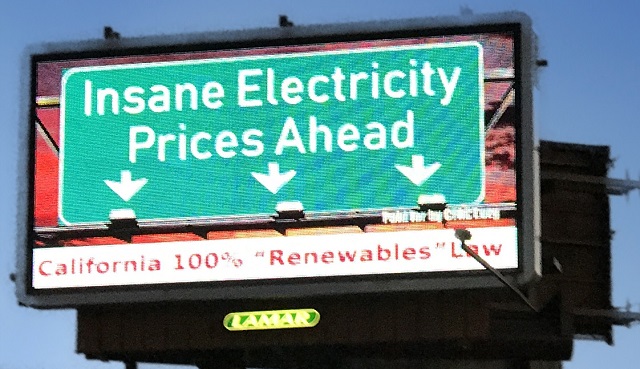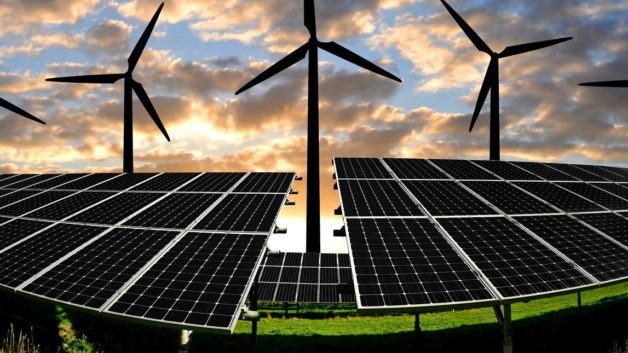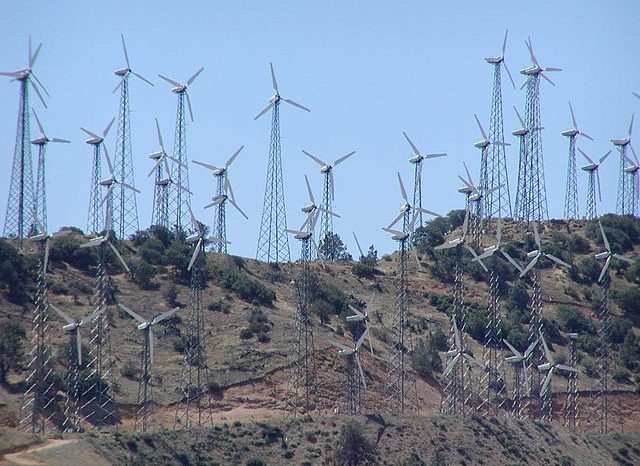Batten down the hatches! A tsunami of global warming and “clean energy” propaganda is approaching! San Francisco is hosting the September 12-14 Global Climate Action Summit, a massive event at which “international and local leaders from states, regions, cities, businesses, investors and civil society … will be joined by national government leaders, scientists, students, nonprofits and others … [to share] what they have achieved to date and commit to doing more to usher in the era of decarbonization.”
Decarbonization means phasing out the fossil fuels that now provide over 80% of all the energy we use – in favor of wind, solar and other supposedly clean energy sources. In his video promoting the Summit, Governor Jerry Brown said, “It’s up to you and it’s up to me, and tens of millions of other people to get it together to roll back the forces of carbonization and join together to combat the existential threat of climate change.” The Summit home page even claims “decarbonization of the global economy is in sight.”
That is ridiculous. The world has been using more coal, oil and natural gas over the past decade, not less, because they are the best energy sources available. The supposedly clean, green renewable energy sources and their long transmission lines are far too expensive and unreliable for widespread use. They also have major pollution issues of their own, though the worst impacts occur in countries with weak environmental controls. They require vast amounts of fossil fuel energy and raw materials to manufacture. They impact millions of acres for mining, waste disposal, wind and solar facilities, and transmission lines.
At the recent America First Energy Conference, Louisiana Attorney General Jeff Landry noted that just generating enough electricity to power the Houston metropolitan area would require over 21,000 square miles (13.4 million acres) of corn fields, if the fuel source was corn ethanol. “Think about that footprint!” Landry exclaimed. To produce the same amount of electricity from wind power would take almost 900 square miles of wind turbines or 150 square miles of solar panels, he added (and millions of batteries).
Wind turbines already kill millions of raptors, other birds and bats, many of them rare, threatened or endangered. Imagine the impacts from all the turbines needed to generate all the world’s electricity. And climate change is almost entirely a natural phenomenon, over which humans have essentially no control.
To support the decarbonization ruse, Summit speakers will employ simple but effective language tricks. We’re already getting a taste. For example, the Summit’s Press Room proclaimed on August 23, “19 Global Cities Commit to Make New Buildings ‘Net-Zero Carbon’ by 2030.”
The World Green Building Council says the objective of net-zero carbon building is to “achieve net zero carbon emissions annually in operation.” But of course, that just means that most of the emissions merely have to be created somewhere else, as discussed above.
The WGBC says this is being done to achieve the goals of the Paris Agreement, “the start of the most important race in our existence – the race to curb global greenhouse gas (GHG) emissions, so that global temperature rise remains below 2 degrees Celsius and, ideally, below 1.5 degrees Celsius.”
But that rise began with the modern industrial revolution and end of the Little Ice Age in 1850 – which means we now have less than a degree to spare before climate chaos allegedly sets in. That too is ridiculous. Moreover, humans cannot control climate as if we had a global thermostat, and we are not really talking about controlling “carbon” anyway.
Al Gore started that deception with his 2006 pseudo-documentary, An Inconvenient Truth, which claimed “carbon emissions” were going to destroy our planet. Gore helped popularize the term “carbon footprint,” while always hiding the enormity of his own footprint – and hiding the fact that the “dangerous pollutant” is actually carbon dioxide (CO2), the gas that people and animals exhale and plants use to grow. The more CO2 in the air, the better and faster plants grow. It’s a natural, happy, mutually beneficial process.
So, in an unfortunately all too successful attempt to scare people, Gore and his cohorts began using “carbon” as a synonym for carbon dioxide, knowing it would conjure up visions of soot, lamp black and coal dust. Aside from the fact that CO2 contains a single molecule of carbon, it has about as much in common with elemental carbon as lightning does with lightning bugs.
Robert Gould, MD, president of the San Francisco Bay Area Chapter of Physicians for Social Responsibility, further illustrates how distorted the climate debate terminology has become. Gould says “the decarbonization of our planet is imperative for human survival.” In reality, a decarbonized Earth would be a dead world, a world devoid of all life, including ours.
Many people have unwittingly accepted the “carbon” sleight-of-hand, without realizing they are being manipulated toward negative thoughts about plant food. It is possibly the best example of subliminal brainwashing ever.
Fears that CO2 increases can deleteriously impact temperatures should also be scuttled. Carbon dioxide can absorb only a narrow wave length of the radiation (heat) returning to the atmosphere from Earth, which initially absorbs it from the Sun. That wavelength is 15 microns or millionths of a meter – and the atmosphere’s current 410 parts per million of CO2 has already absorbed essentially all of the heat’s wavelength the Earth has to give. That means any further additions of CO2 can have no measurable impact on the Earth’s greenhouse effect and temperature.
Journalist H. L. Mencken accurately summed up the real goal of these deceptions. “The whole aim of practical politics is to keep the populace alarmed and hence clamorous to be led to safety by menacing it with an endless series of hobgoblins, all of them imaginary,” he observed. Global warming is the best hobgoblin the radical environmentalists have concocted so far.
Misuse of the word carbon is no laughing matter, however. This unsubstantiated fear is depriving the less fortunate among us of sorely needed, inexpensive energy, by eliminating life-giving fossil fuels and the miracle molecule of life, CO2. In the process, society is subjected to further government control, reduced individual freedom, greater socialism, less free enterprise capitalism – and lower living standards for everyone except wealthy, privileged ruling elites.
If you don’t think such nefarious word games can have such an impact, just remember how the term “Y2K” struck fear in many hearts and minds, by conjuring up endless turmoil that awaited us on New Year’s Eve 1999. Most of us woke up laughing at how we had been conned into worrying for months and years – when in reality turning to the new millennium simply required changing two digits on each computer that controlled planes, trains and electric grids.
The havoc never happened, and billions of dollars were wasted – just as is happening with climate chaos.
Some might say we are merely arguing semantics. If by “semantics” they mean “the branch of linguistics and logic concerned with meaning,” they’d be right. In fact, linguistic and logic deception will be a major weapon wielded by Global Climate Action Summit speakers next week. Indeed, University of Florida linguist M. J. Hardman tells us, “language is inseparable from humanity and follows us in all our works. Language is the instrument with which we form thought and feeling, mood, aspiration, will and act[ion], the instrument by whose means we influence and are influenced.”
So as the Summit wears on, note how often you hear the word “carbon” – as in “carbon emissions,” “carbon footprint,” “carbon trading” and “decarbonization” – when the real topic is carbon dioxide, the plant-fertilizing “gas of life.” Reword the sentences using carbon dioxide, and ponder how they are trying to deceive you, scare you about manmade climate cataclysms, convince you to eliminate 80% of the energy you use, and let them control your life and living standards – while they get rich and powerful.
These word games are not like the difference between saying a flower is “pretty” or “beautiful.” They are intentional distortions used to drive their anti-fossil fuel agenda. We must call them on it every time.
Tom Harris is executive director of the Ottawa-based International Climate Science Coalition.
Dr. Jay Lehr is The Heartland Institute’s Science Director. At AFEC, he moderated the conference panel “Why CO2 emissions are not creating a climate crisis.”





















